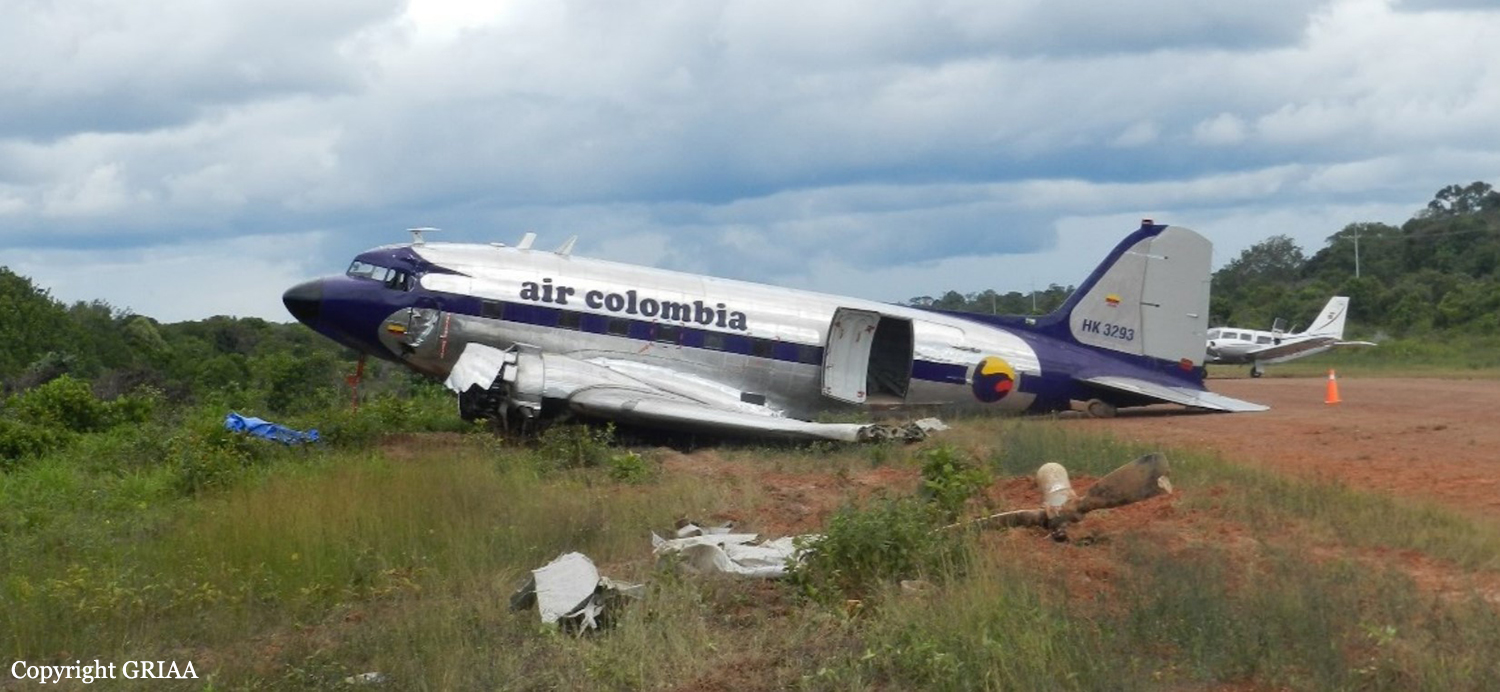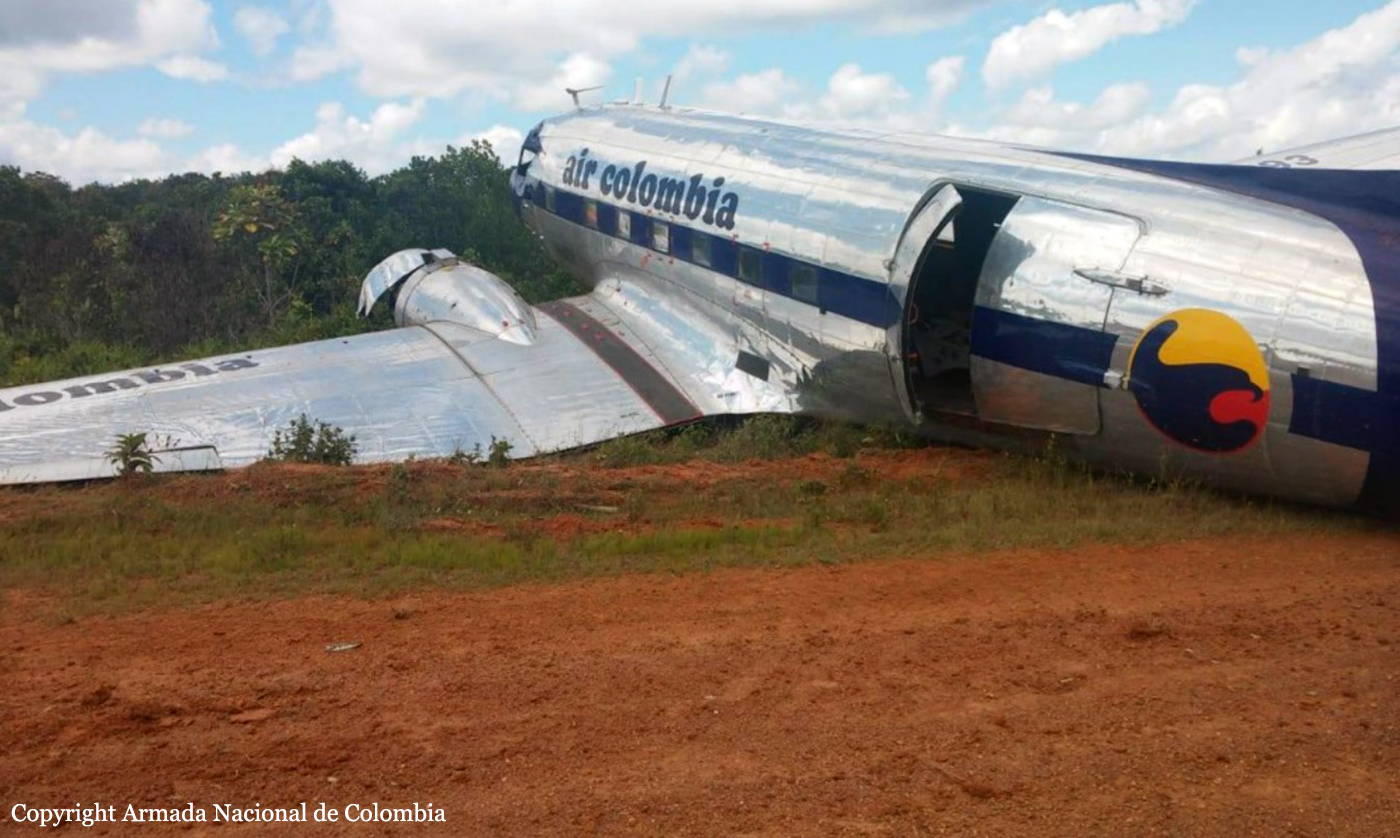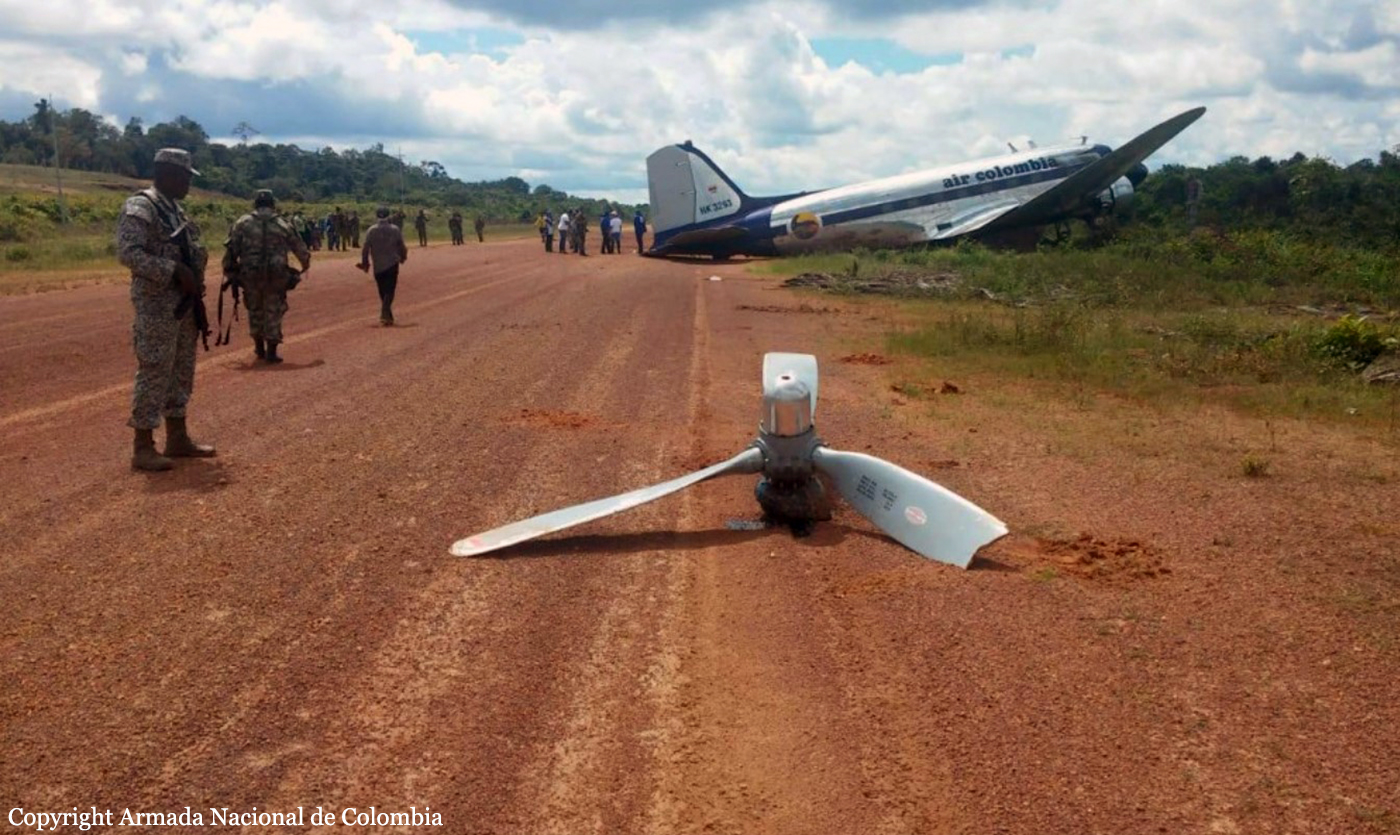Country
Crash of a Douglas DC-3C near Restrepo: 3 killed
Date & Time:
Jul 8, 2021 at 0709 LT
Registration:
HK-2820
Survivors:
No
Schedule:
Villavicencio - Villavicencio
MSN:
20171
YOM:
1944
Crew on board:
2
Crew fatalities:
Pax on board:
1
Pax fatalities:
Other fatalities:
Total fatalities:
3
Captain / Total hours on type:
16680.00
Copilot / Total hours on type:
8170
Aircraft flight hours:
18472
Circumstances:
The twin engine airplane departed Villavicencio-La Vanguardia Airport Runway 05 at 0659LT on a training flight consisting with a proficiency check of the captain. On board were one instructor, one captain and one mechanic. About 10 minutes into the flight, while cruising at an altitude of 6,000 feet over mountainous terrain in Instrument Meteorological Conditions, the airplane impacted trees and crashed on the slope of a hilly terrain located in the region of Restrepo. The wreckage was found three days later. All three crew members were killed.
Probable cause:
Probable causes:
- Controlled flight into terrain during the execution of the IFR departure procedure VVC2A, during which the crew mistakenly turned left, contrary to the procedure, heading towards the mountainous area at the foothills of the eastern range, where the impact occurred.
- Loss of situational awareness by the crew, which, for reasons that could not be determined, apparently made a controlled left turn, contrary to the indications of the VVC2A departure procedure, even though it was an experienced crew familiar with the operating area.
The following contributing factors were identified:
- Lack of operator standards, as there was no detailed, organized, and sequential instructional plan and syllabus for the crew to follow during each maneuver, such as the VVC2A instrument departure.
- Lack of operator standards, as there was no specific syllabus for the planning and execution of the Recurrent Check, taking into account, among other aspects, the composition of the aircraft crew, consisting of two instructor pilots, one of whom was conducting the check on the other.
- Inadequate planning and supervision of the training flight by the operator, as they did not conduct a specific risk analysis of the flight, did not monitor its preparation and execution, did not provide details in a flight order or other document, considering especially the composition of the aircraft crew, consisting of two instructor pilots, one of whom was conducting the check on the other.
- Deficient planning and preparation of the flight by the crew, as they informally changed the VFR Flight Plan to IFR, apparently did not conduct a complete and adequate briefing, were unaware of or did not consider the VVC2A SID for the start of the IFR flight, and omitted several IFR flight procedures.
- Crew's neglect of the following IFR flight procedures:
- Not specifying a route and an IFR departure procedure in the IFR Flight Plan.
- Not requesting complete authorization from ATC to initiate an IFR flight. At no time did they mention the VVC2A departure, which was key to the verbally proposed plan before takeoff.
- Not defining or requesting from ATS which standard departure procedure or other they would use to initiate the IFR flight, in which they would encounter IMC shortly after takeoff.
- Not requiring ATC to assign a transponder code before takeoff or at any other phase of the flight, or selecting code 2000 as they did not receive instructions from ATS to activate the transponder.
- Likely not activating the transponder before takeoff and/or not verifying its correct operation before takeoff or immediately once the aircraft was in the air.
- Inaccurate use of phraseology with non-standard terminology in their transmissions with ATC.
- Insufficient experience and training in IFR flights by the crew, despite their extensive experience with the equipment. Much of this experience had been gained in the eastern region of the country, where the majority of DC3 flights are conducted in VMC and under VFR, with no opportunity for the practical execution of IFR procedures.
- Overconfidence of the crew, influenced by factors such as the high flight experience and DC3 equipment experience of the two pilots in the crew, their status as instructor pilots, the relatively low operational demand of the flight mission, and the knowledge, familiarity, and confidence of both crew members with the aerodrome's characteristics, the surrounding area, and especially the peculiarities and risks of the terrain to the west of the takeoff path.
- Non-observance by air traffic control of the following IFR flight procedures initiated by HK2820:
- Failure to issue complete authorization to the aircraft for the IFR flight before initiating the flight or at any other time.
- Failure to issue a standardized instrument departure, SID, or any other safe departure procedure to the aircraft. At no time did ATC mention the VVC2A departure, which was crucial for carrying out the plan verbally proposed by the crew.
- Failure to provide the aircraft with a transponder code before takeoff or at another appropriate time, or to verify its response. This process started only 03:11 minutes after the aircraft took off, so positive radar contact verification was only achieved 04:58 minutes after takeoff, delaying radar presentation and limiting positive flight control.
- Late transfer of aircraft control from the Control Tower to Approach Control (03:35 minutes after takeoff), not immediately after the aircraft was airborne as it should have been, considering prevailing IMC flight conditions in the vicinity of the aerodrome.
- Operating with an incomplete radar display configuration in Approach Control, with insufficient symbology, depriving control of references and judgment elements for an accurate location of the aircraft and its left turn from the path.
- Failure to observe radar surveillance techniques and procedures.
- Inaccurate use of phraseology with non-standard terminology in their transmissions with the aircraft.
- Lack of situational awareness by both the crew and ATC during a flight that, perhaps because it seemed routine, led both parties to omit elementary IFR flight procedures, disregarding the inherent risks of an operation in IMC conditions, with strict IFR procedures that needed to be followed, considering, among other things, the aerodrome's proximity to a mountainous area.
- Controlled flight into terrain during the execution of the IFR departure procedure VVC2A, during which the crew mistakenly turned left, contrary to the procedure, heading towards the mountainous area at the foothills of the eastern range, where the impact occurred.
- Loss of situational awareness by the crew, which, for reasons that could not be determined, apparently made a controlled left turn, contrary to the indications of the VVC2A departure procedure, even though it was an experienced crew familiar with the operating area.
The following contributing factors were identified:
- Lack of operator standards, as there was no detailed, organized, and sequential instructional plan and syllabus for the crew to follow during each maneuver, such as the VVC2A instrument departure.
- Lack of operator standards, as there was no specific syllabus for the planning and execution of the Recurrent Check, taking into account, among other aspects, the composition of the aircraft crew, consisting of two instructor pilots, one of whom was conducting the check on the other.
- Inadequate planning and supervision of the training flight by the operator, as they did not conduct a specific risk analysis of the flight, did not monitor its preparation and execution, did not provide details in a flight order or other document, considering especially the composition of the aircraft crew, consisting of two instructor pilots, one of whom was conducting the check on the other.
- Deficient planning and preparation of the flight by the crew, as they informally changed the VFR Flight Plan to IFR, apparently did not conduct a complete and adequate briefing, were unaware of or did not consider the VVC2A SID for the start of the IFR flight, and omitted several IFR flight procedures.
- Crew's neglect of the following IFR flight procedures:
- Not specifying a route and an IFR departure procedure in the IFR Flight Plan.
- Not requesting complete authorization from ATC to initiate an IFR flight. At no time did they mention the VVC2A departure, which was key to the verbally proposed plan before takeoff.
- Not defining or requesting from ATS which standard departure procedure or other they would use to initiate the IFR flight, in which they would encounter IMC shortly after takeoff.
- Not requiring ATC to assign a transponder code before takeoff or at any other phase of the flight, or selecting code 2000 as they did not receive instructions from ATS to activate the transponder.
- Likely not activating the transponder before takeoff and/or not verifying its correct operation before takeoff or immediately once the aircraft was in the air.
- Inaccurate use of phraseology with non-standard terminology in their transmissions with ATC.
- Insufficient experience and training in IFR flights by the crew, despite their extensive experience with the equipment. Much of this experience had been gained in the eastern region of the country, where the majority of DC3 flights are conducted in VMC and under VFR, with no opportunity for the practical execution of IFR procedures.
- Overconfidence of the crew, influenced by factors such as the high flight experience and DC3 equipment experience of the two pilots in the crew, their status as instructor pilots, the relatively low operational demand of the flight mission, and the knowledge, familiarity, and confidence of both crew members with the aerodrome's characteristics, the surrounding area, and especially the peculiarities and risks of the terrain to the west of the takeoff path.
- Non-observance by air traffic control of the following IFR flight procedures initiated by HK2820:
- Failure to issue complete authorization to the aircraft for the IFR flight before initiating the flight or at any other time.
- Failure to issue a standardized instrument departure, SID, or any other safe departure procedure to the aircraft. At no time did ATC mention the VVC2A departure, which was crucial for carrying out the plan verbally proposed by the crew.
- Failure to provide the aircraft with a transponder code before takeoff or at another appropriate time, or to verify its response. This process started only 03:11 minutes after the aircraft took off, so positive radar contact verification was only achieved 04:58 minutes after takeoff, delaying radar presentation and limiting positive flight control.
- Late transfer of aircraft control from the Control Tower to Approach Control (03:35 minutes after takeoff), not immediately after the aircraft was airborne as it should have been, considering prevailing IMC flight conditions in the vicinity of the aerodrome.
- Operating with an incomplete radar display configuration in Approach Control, with insufficient symbology, depriving control of references and judgment elements for an accurate location of the aircraft and its left turn from the path.
- Failure to observe radar surveillance techniques and procedures.
- Inaccurate use of phraseology with non-standard terminology in their transmissions with the aircraft.
- Lack of situational awareness by both the crew and ATC during a flight that, perhaps because it seemed routine, led both parties to omit elementary IFR flight procedures, disregarding the inherent risks of an operation in IMC conditions, with strict IFR procedures that needed to be followed, considering, among other things, the aerodrome's proximity to a mountainous area.
Final Report:

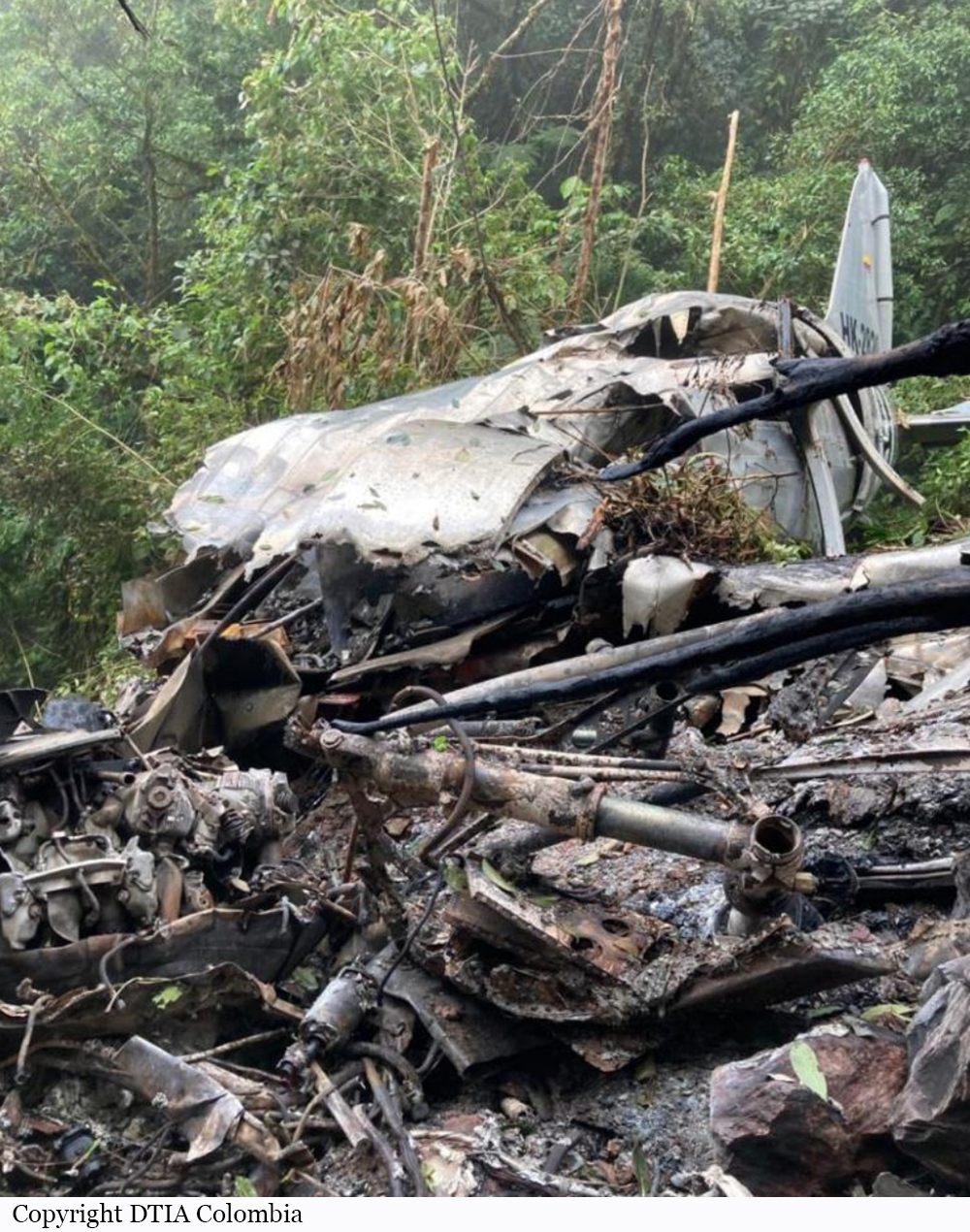

Crash of a Douglas DC-3C off Nassau
Date & Time:
Oct 18, 2019 at 1630 LT
Registration:
N437GB
Survivors:
Yes
Schedule:
Miami - Nassau
MSN:
19999
YOM:
1944
Crew on board:
2
Crew fatalities:
Pax on board:
0
Pax fatalities:
Other fatalities:
Total fatalities:
0
Circumstances:
On the 18th October 2019, at approximately 4:30 PM local time, a Douglas DC-3C aircraft, registration N437GB crashed in the ocean; at coordinates 25°05.55N 077°30.29W, approximately 2.87miles from Runway 14 at the Lynden Pindling International Airport (MYNN) Nassau, Bahamas. There were 2 souls on board. The pilot reported that the left engine failed approximately 25-30 nautical miles from MYNN. The pilot further stated that during single engine operation, the aircraft performance was not optimal so the decision was made to land the aircraft in the ocean. The Air Traffic Control tower was notified by the crew of N437GB, that they will be performing a control water landing. The Royal Bahamas Defense Force was notified. Rescue efforts were then put into place. No injuries were received by the occupants of the aircraft. Aircraft could not be located for physical analysis to be carried out. The weather at the time of the accident was visual meteorological conditions and not a factor in this accident. A limited scope investigation was conducted, no safety message or recommendations were issued.
Probable cause:
Failure of the left engine on approach for unknown reasons.
Final Report:


Crash of a Douglas DC-3 in Finca La Bendición: 14 killed
Date & Time:
Mar 9, 2019 at 1036 LT
Registration:
HK-2494
Survivors:
No
Schedule:
San Jose del Guaviare – Villavicencio
MSN:
33105/16357
YOM:
1945
Crew on board:
3
Crew fatalities:
Pax on board:
11
Pax fatalities:
Other fatalities:
Total fatalities:
14
Captain / Total hours on type:
7044.00
Copilot / Total hours on type:
7044
Aircraft flight hours:
23000
Circumstances:
The twin engine airplane departed San José del Guaviare on a charter flight to Villavicencio, carrying 11 passengers and three crew members. While cruising at an altitude of 8,500 feet in good weather conditions, the left engine failed due to an important fuel leak. The crew elected to secure the engine but was unable to feather the propeller. The airplane lost speed and height, and while attempting an emergency landing, the crew lost control of the airplane that stalled and crashed in a palm plantation, bursting into flames. The aircraft was totally destroyed by a post crash fire and all 14 occupants were killed.
Probable cause:
The investigation determined that the accident was caused by the following probable causes:
- Loss of control in-flight as a consequence of the decrease in minimum in-flight control speed and drag generated by the impossibility of performing the No. 1 engine propeller feathering in the face of engine failure.
- Malfunction of the lubrication system of engine No. 1, evident in the abundant oil leakage from the engine, in flight, and in the governor of the left propeller; although discrepancies were found in the maintenance of the propeller feathering pressure line, it was not possible to determine the origin of the oil leakage.
- Weaknesses in the aircraft Operator's operational procedures, lacking a standard that would facilitate a crew's decision making to act in the event of critical failures, in matters such as making an emergency landing on unprepared field or the selection of an alternate airfield.
Contributing Factors:
- Deficiencies in standard maintenance practices during repairs performed on the No. 1 engine's propeller propeller feathering oil pressure line.
- Non-compliance with an effective and reliable maintenance program, which did not verify the operating conditions of the aircraft components; it was not possible to determine compliance with the last 50-hour service, Phase A, to engine No. 1 according to the company's maintenance program, since there are no records of that service in the Flight Log.
- Inefficient safety management system of the Operator for not detecting errors in the maintenance processes and in the conduct and control of operations.
- Loss of control in-flight as a consequence of the decrease in minimum in-flight control speed and drag generated by the impossibility of performing the No. 1 engine propeller feathering in the face of engine failure.
- Malfunction of the lubrication system of engine No. 1, evident in the abundant oil leakage from the engine, in flight, and in the governor of the left propeller; although discrepancies were found in the maintenance of the propeller feathering pressure line, it was not possible to determine the origin of the oil leakage.
- Weaknesses in the aircraft Operator's operational procedures, lacking a standard that would facilitate a crew's decision making to act in the event of critical failures, in matters such as making an emergency landing on unprepared field or the selection of an alternate airfield.
Contributing Factors:
- Deficiencies in standard maintenance practices during repairs performed on the No. 1 engine's propeller propeller feathering oil pressure line.
- Non-compliance with an effective and reliable maintenance program, which did not verify the operating conditions of the aircraft components; it was not possible to determine compliance with the last 50-hour service, Phase A, to engine No. 1 according to the company's maintenance program, since there are no records of that service in the Flight Log.
- Inefficient safety management system of the Operator for not detecting errors in the maintenance processes and in the conduct and control of operations.
Final Report:
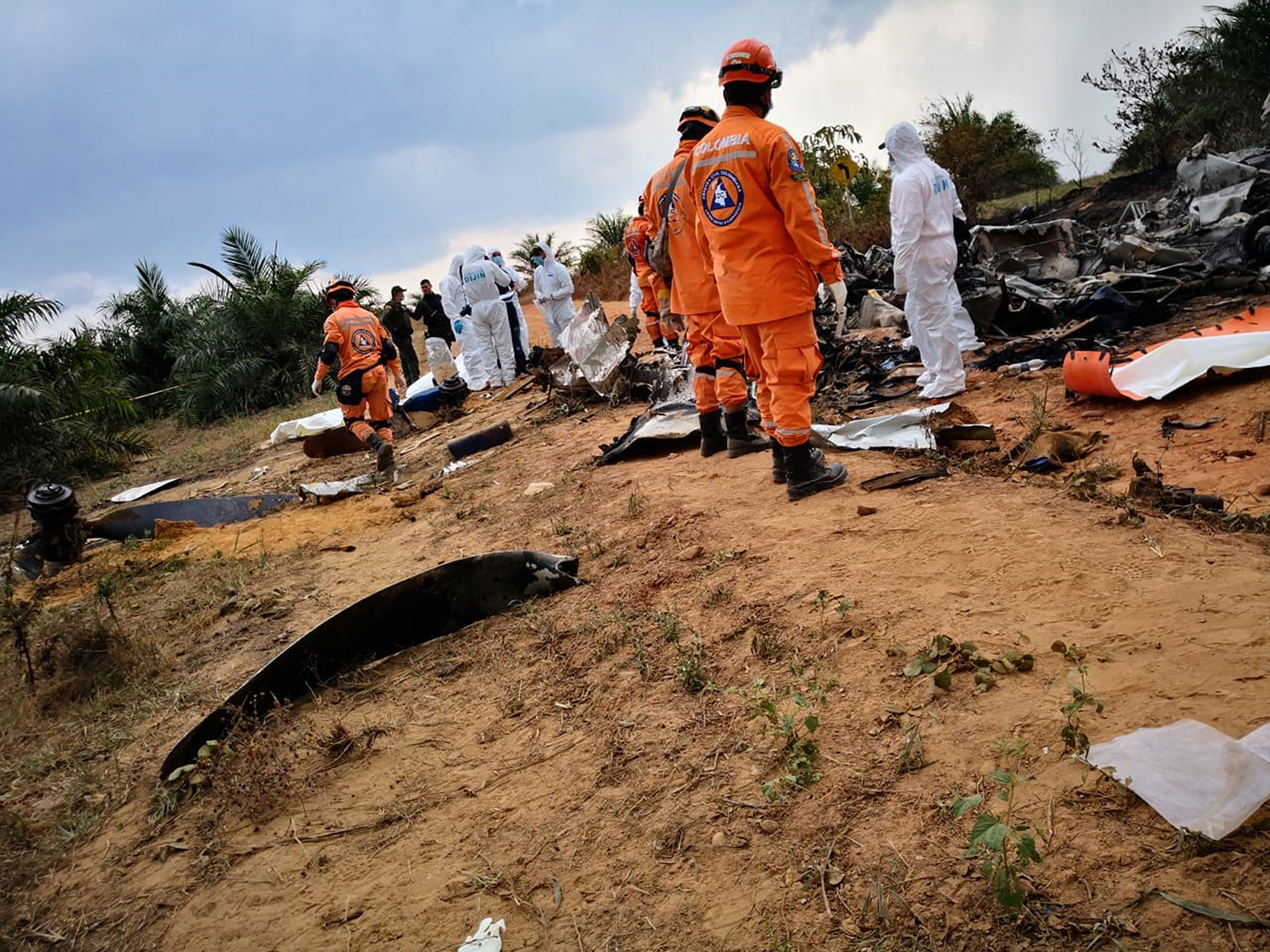

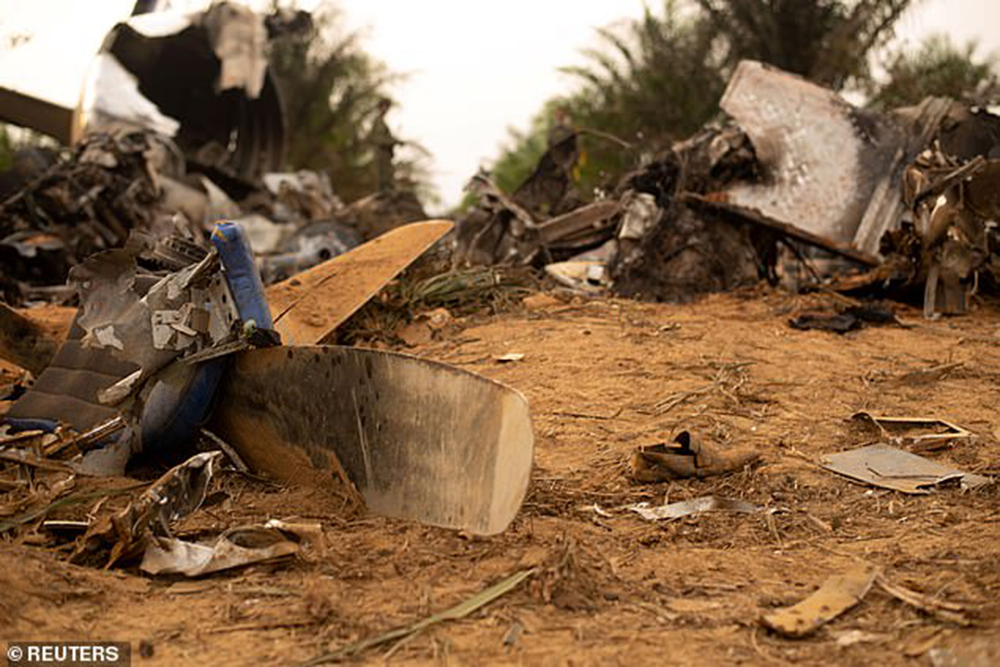
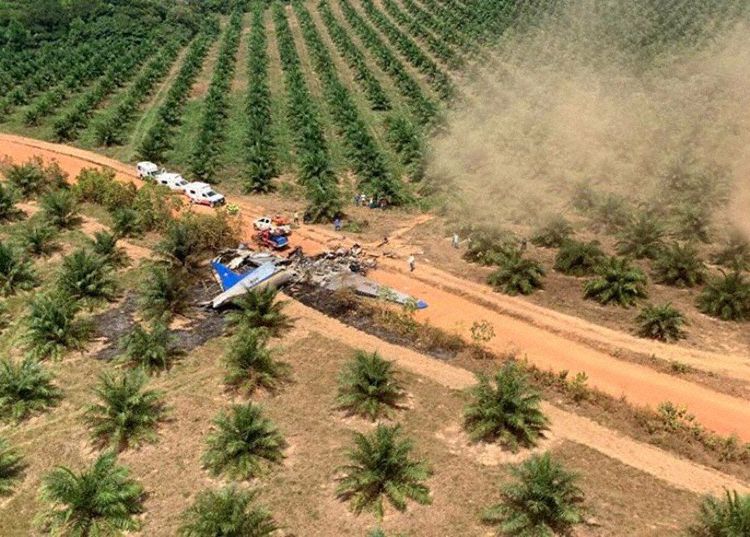

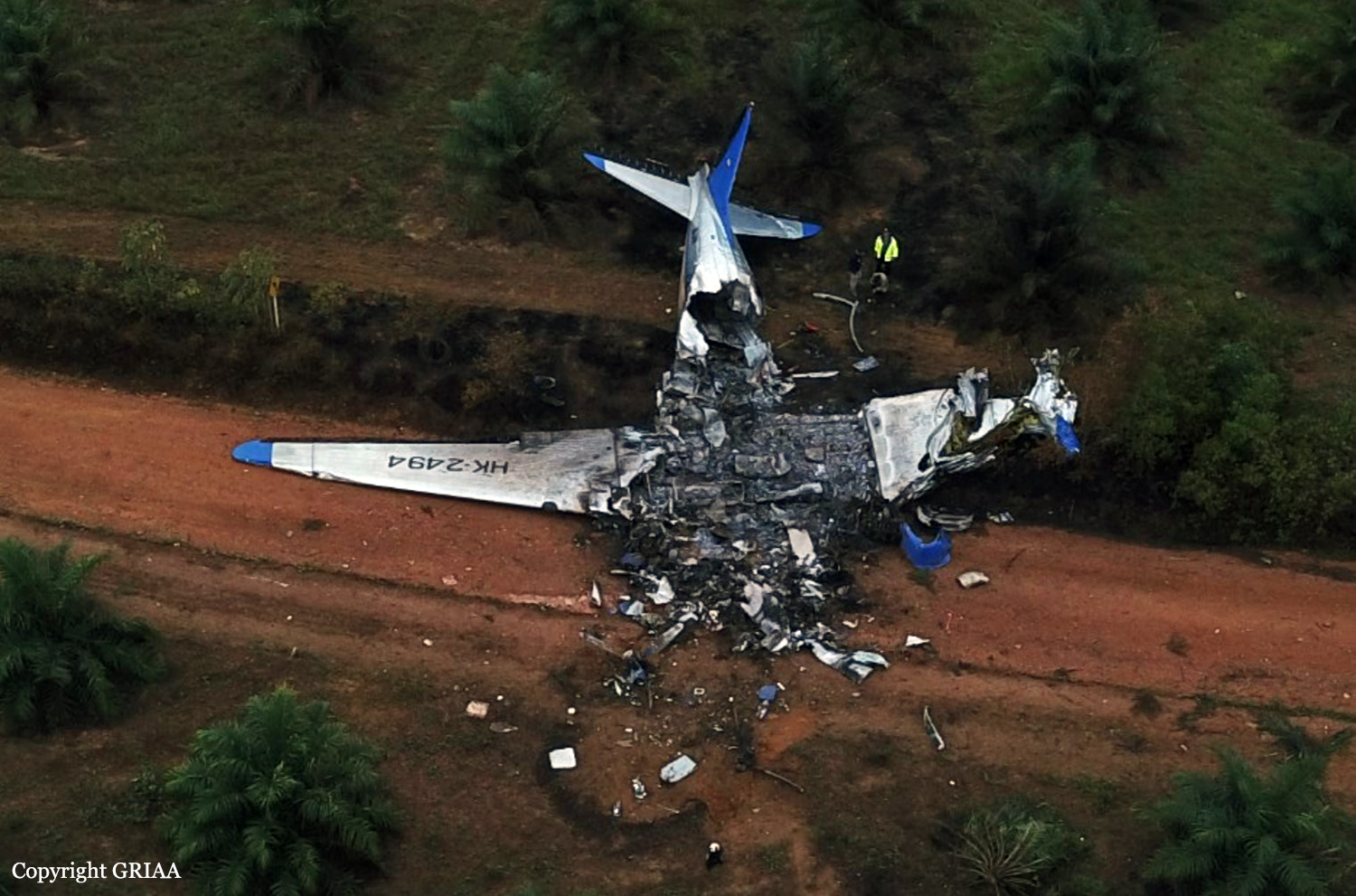
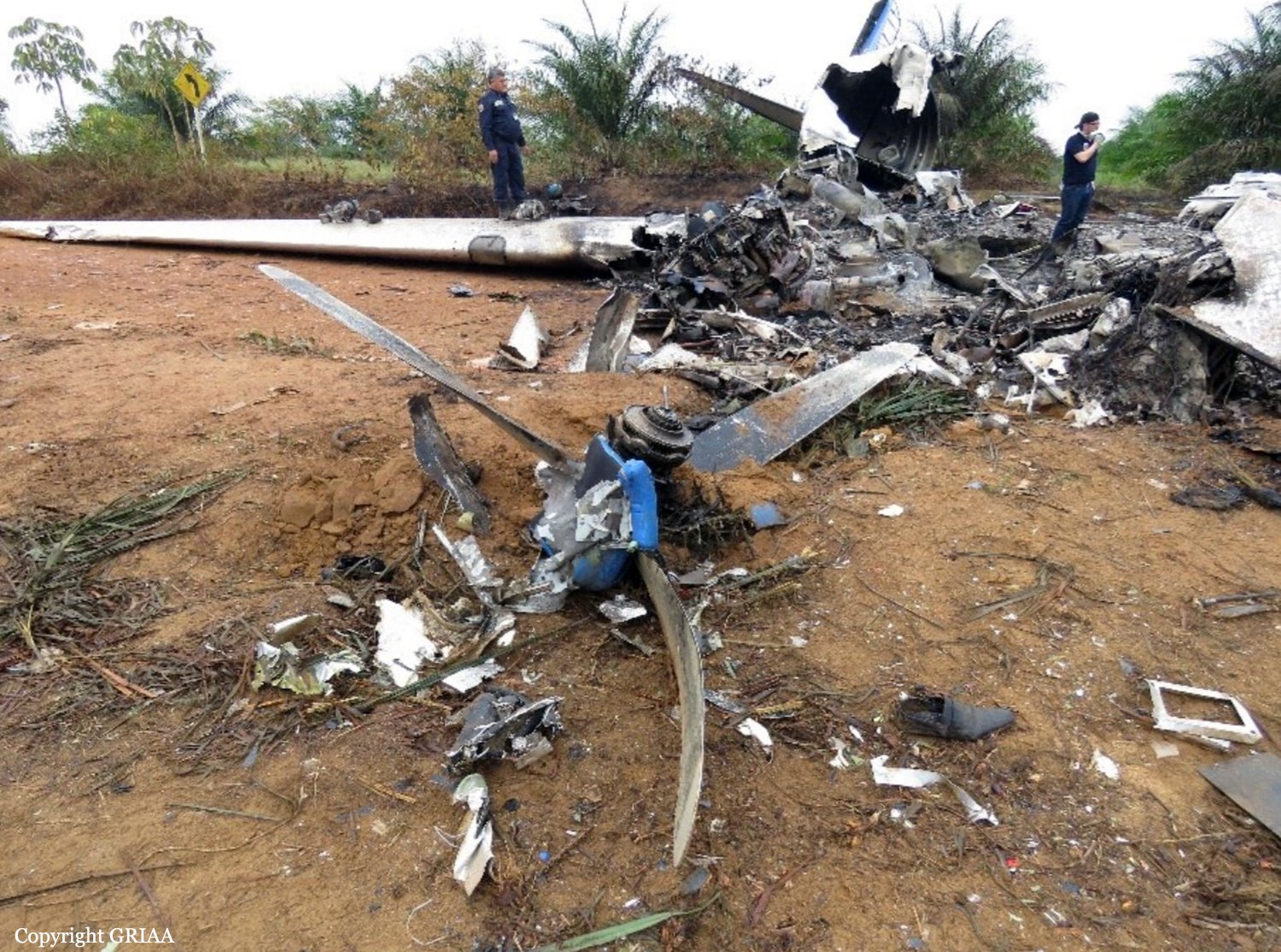
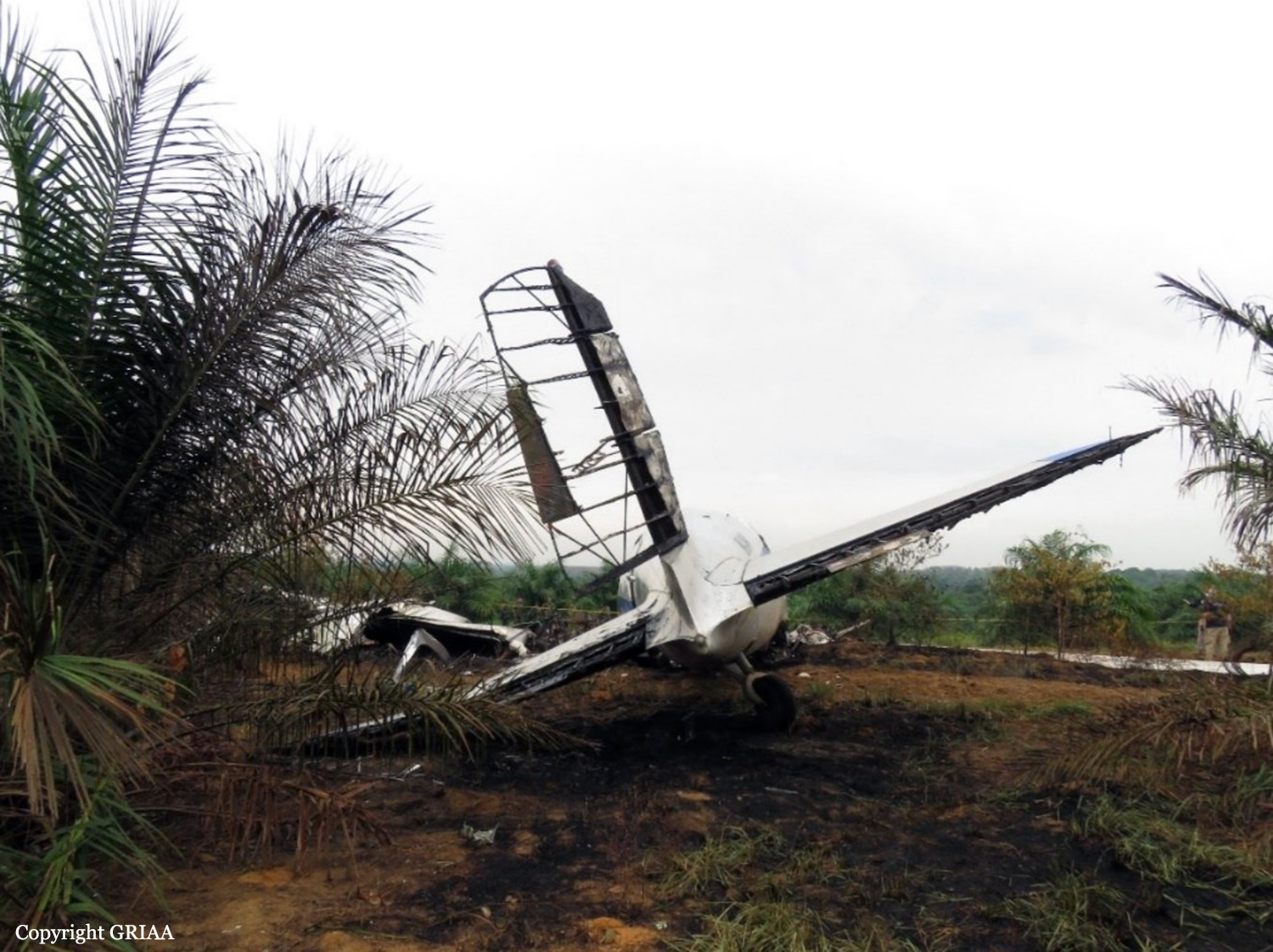
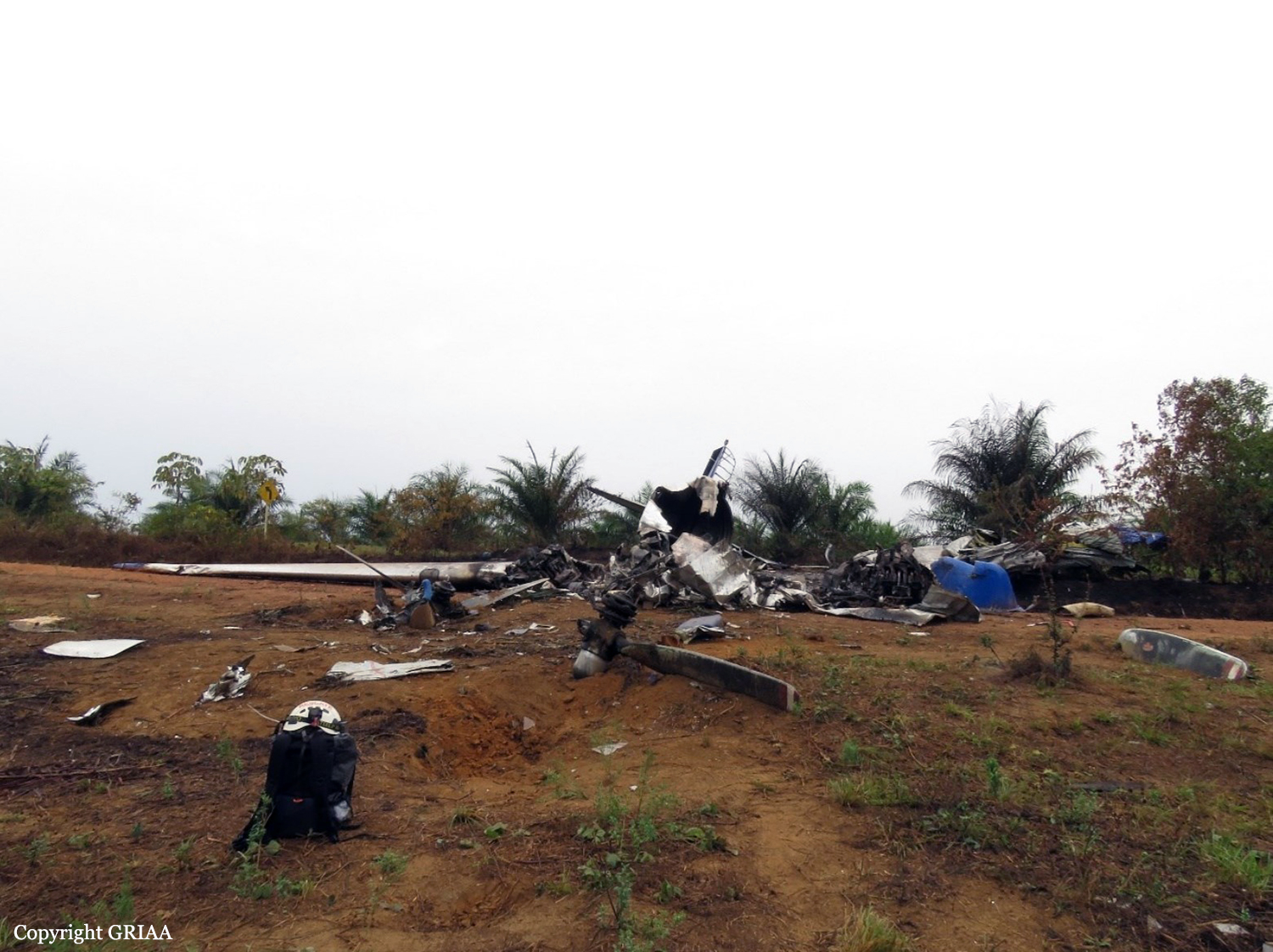
Crash of an AMI DC-3-65TP in Kidron: 2 killed
Date & Time:
Jan 21, 2019 at 0912 LT
Registration:
N467KS
Survivors:
Yes
Schedule:
Kidron - Akron
MSN:
20175
YOM:
1944
Crew on board:
2
Crew fatalities:
Pax on board:
0
Pax fatalities:
Other fatalities:
Total fatalities:
2
Captain / Total hours on type:
5612.00
Copilot / Total hours on type:
12
Aircraft flight hours:
37504
Circumstances:
The two pilots departed in a turbine powered DC-3C at maximum gross weight for a repositioning flight. The airplane was part of a test program for new, higher horsepower engine installation. Soon after liftoff and about 3 seconds after decision speed (V1), the left engine lost total power. The propeller began to auto-feather but stopped feathering about 3 seconds after the power loss. The airplane yawed and banked to the left, descended, and impacted terrain. Recorded engine data indicated the power loss was due to an engine flameout; however, examination of the engine did not determine a reason for the flameout or the auto-feather system interruption. While it is plausible that an air pocket developed in the fuel system during the refueling just before the flight, this scenario was not able to be tested or confirmed. It is possible that the auto-feather system interruption would have occurred if the left power lever was manually retarded during the auto-feather sequence. The power loss and auto-feather system interruption occurred during a critical, time-sensitive phase of flight since the airplane was at low altitude and below minimum controllable airspeed (Vmc). The acutely transitional phase of flight would have challenged the pilots' ability to manually feather the propeller quickly and accurately. The time available for the crew to respond to the unexpected event was likely less than needed to recognize the problem and take this necessary action – even as an immediate action checklist/memory item.
Probable cause:
The loss of airplane control after an engine flameout and auto-feather system interruption during the takeoff climb, which resulted in an impact with terrain.
Final Report:

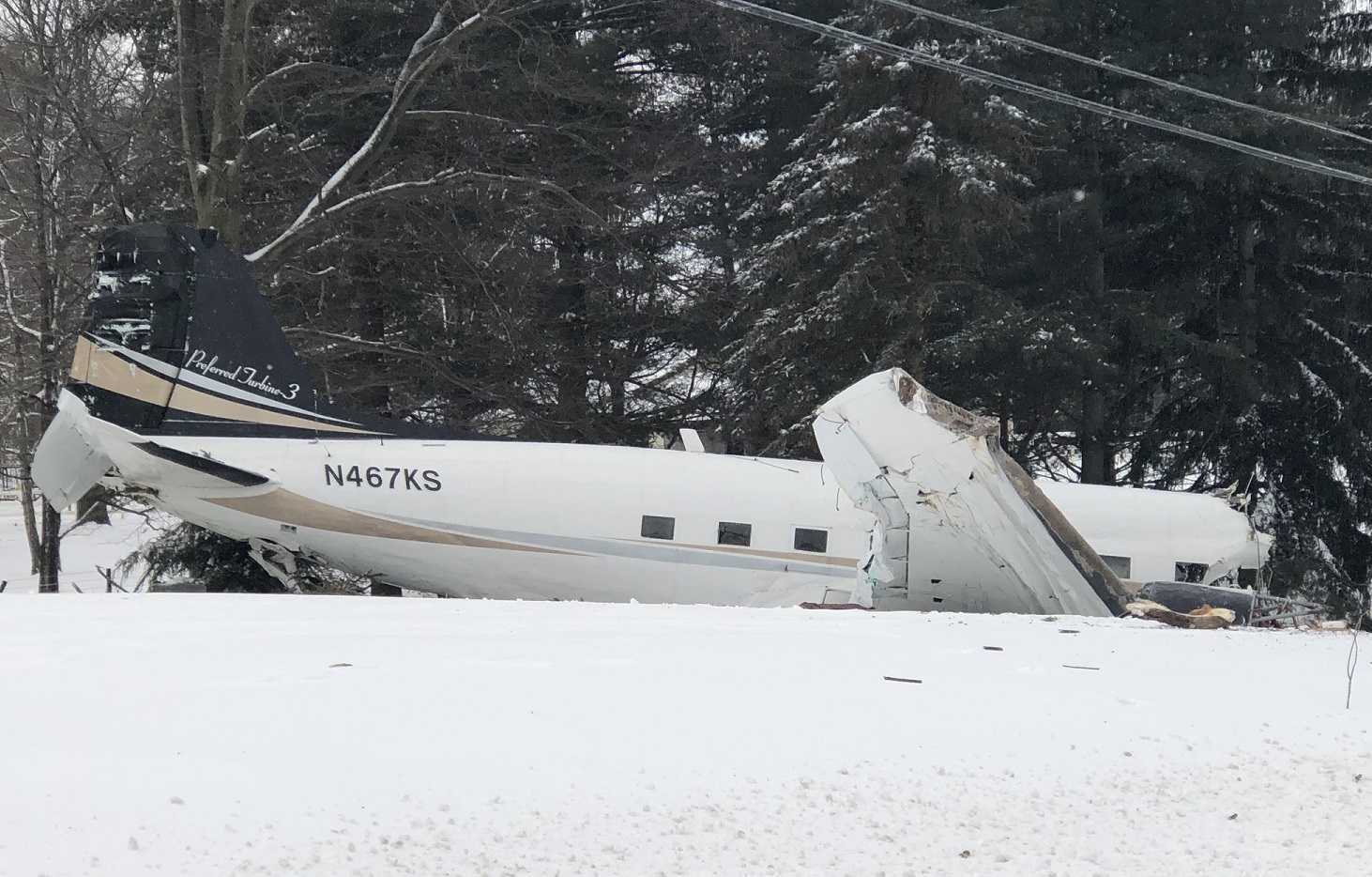
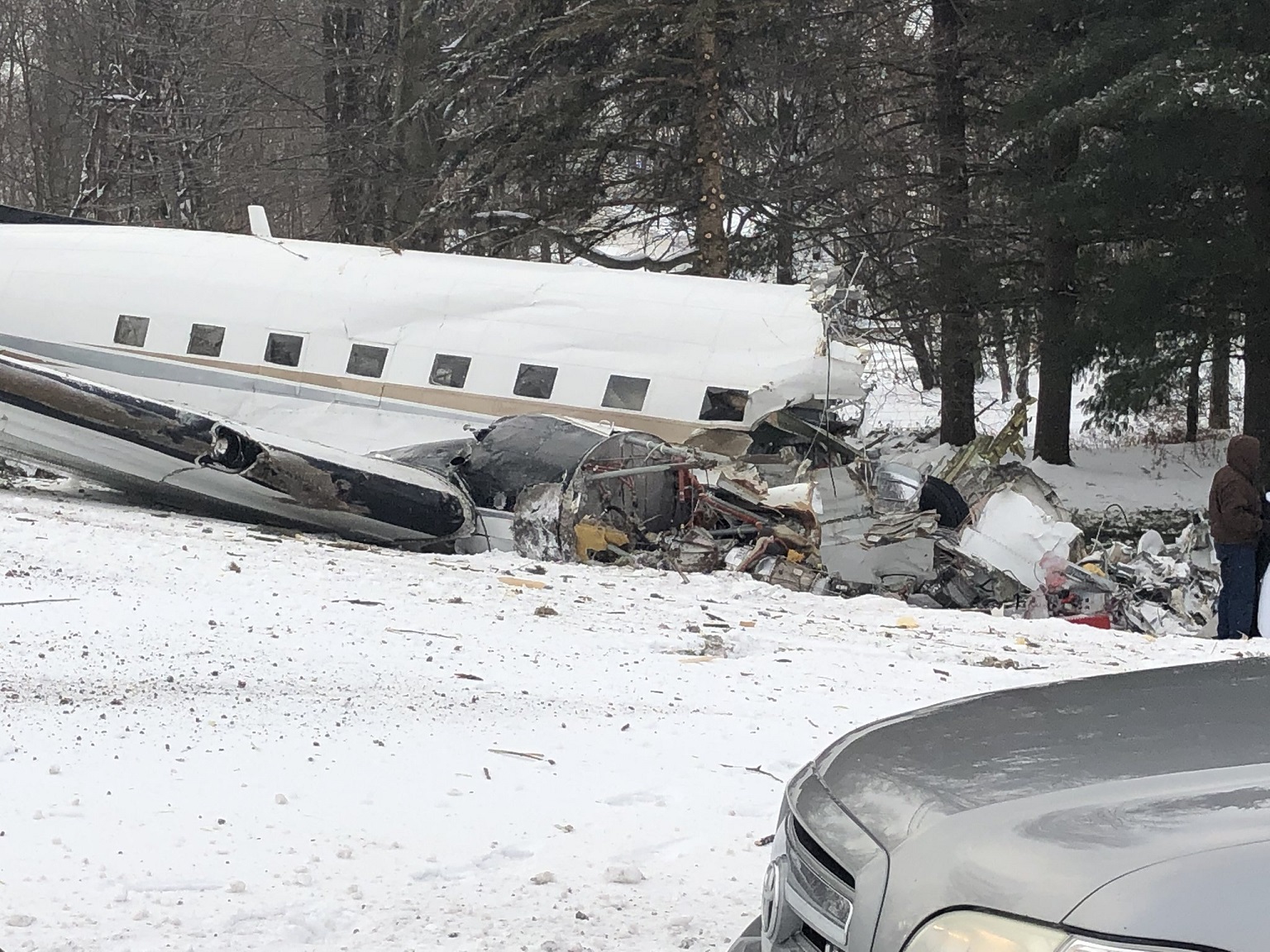

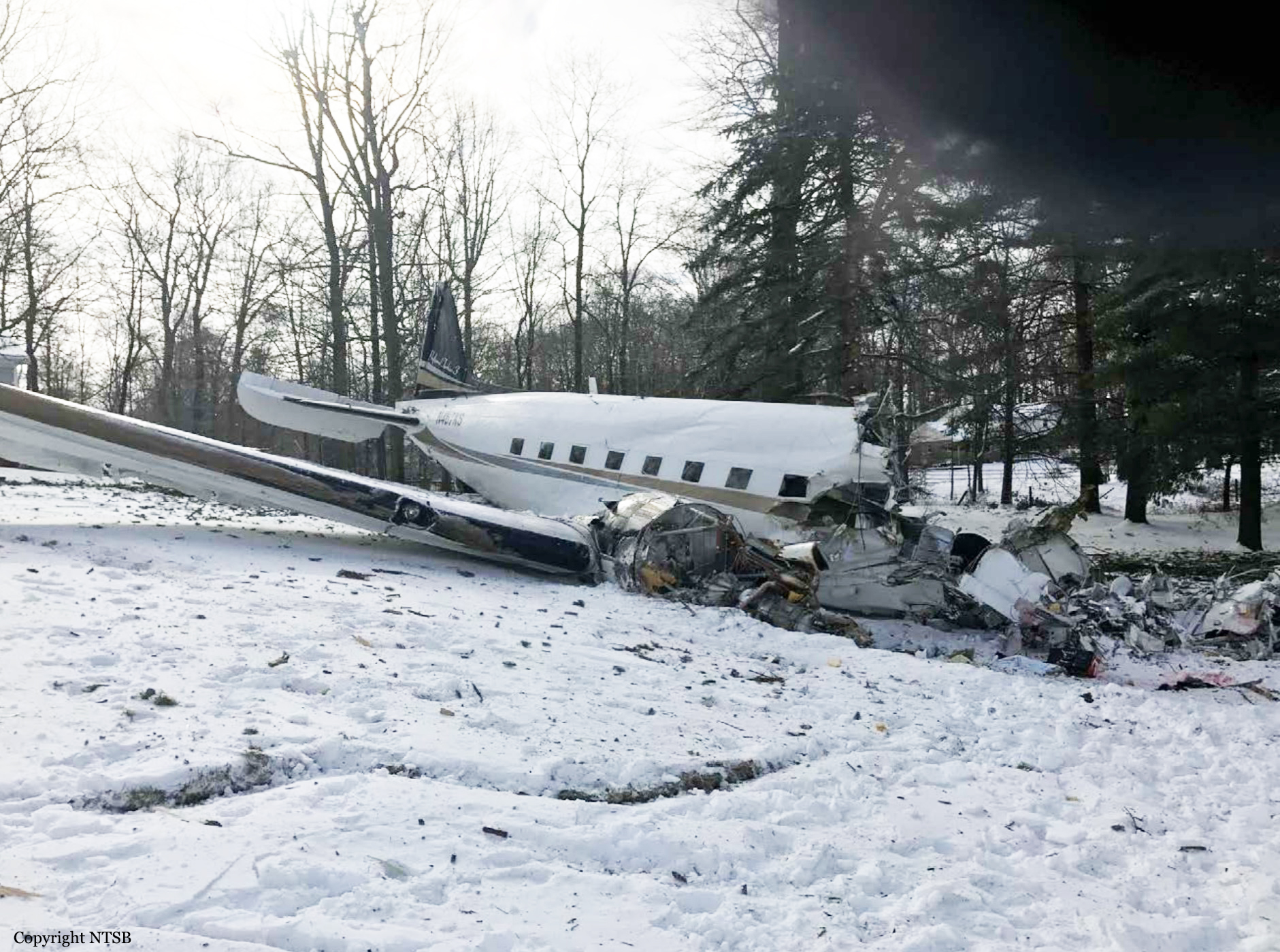
Crash of a Douglas DC-3C in San Felipe
Date & Time:
Jul 11, 2018 at 1220 LT
Registration:
HK-3293
Survivors:
Yes
Schedule:
Inírida – San Felipe
MSN:
9186
YOM:
1943
Crew on board:
3
Crew fatalities:
Pax on board:
9
Pax fatalities:
Other fatalities:
Total fatalities:
0
Captain / Total hours on type:
16000.00
Copilot / Total hours on type:
1715
Aircraft flight hours:
29170
Circumstances:
The aircraft departed Inírida on a humanitarian flight to San Felipe, carrying nine passengers, three crew members and various goods and equipment dedicated to the victims of the recent floods. Following an uneventful flight, the crew landed on runway 18. After touchdown, the aircraft deviated to the left. It pivoted to the left, lost its left main gear and the left propeller and came to a halt on the runway edge. All 12 occupants were rescued, among them one passenger was slightly injured. The aircraft was damaged beyond repair.
Probable cause:
The accident was the consequence of a lateral runway excursion as a result of a loss of control on the ground caused by the loss of air pressure in the left main gear tire, as a result of the penetration of a FOD (metallic object) into the tire during the landing run. Poor risk management by the San Felipe Aerodrome operator (SKFP) and a lack of a runway FOD control program (SKFP) by the operator of the aerodrome was considered as contributing factors.
Final Report:

